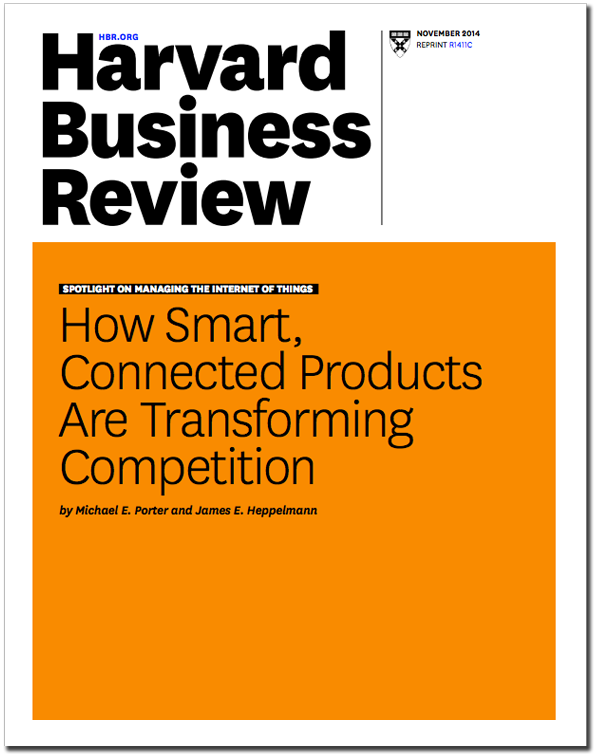How Smart, Connected Products Are Transforming Companies

The November 2014 Harvard Business Review article, How Smart, Connected Products Are Transforming Competition, examines how smart, connected products are transforming competition in many industries, especially manufacturing.
In their upcoming October 2015 Harvard Business Review article, How Smart, Connected Products Are Transforming Companies, the authors will focus on the impact of these products on companies’ operations and organizational structure. Reserve your copy of this upcoming article
Abstract:
The evolution of products into intelligent, connected devices is revolutionizing business. In a November 2014 article, “How Smart, Connected Products Are Transforming Competition,” Harvard Business School professor Michael Porter and PTC president and CEO James Heppelmann looked at how this shift is changing the structure of industries and forcing firms to rethink their strategies. In this companion article, the authors look at the effects inside firms, examining the impact that smart, connected products have on operations and organizational structure.
The new capabilities and vast quantities of data that smart, connected products offer are redefining the activities of the core functions of companies—sometimes radically. As software and cloud-based operating systems become integral to products, new product-development principles emerge, manufacturing components and processes change, and IT security becomes the job of every function. Companies need different skills and expertise, which creates new imperatives for HR. In the marketing function, the ability to track a product’s condition and use shifts the focus to maximizing the product’s value to the customer over time. Customer relationships become continuous and open-ended, service becomes more efficient and proactive, and new business models are enabled. The rich data on location and environment that products provide take logistics to a whole new level.
Smart, connected products also alter interactions between functions, in ways that hold major implications for organizational structure. Intense, ongoing coordination becomes necessary across multiple functions, including design, operations, sales, service, and IT. Functional roles overlap and blur. Entirely new functions—unified data organizations, dev-ops, and customer success management—begin to emerge.
What is under way is the most substantial change in the manufacturing firm since the Second Industrial Revolution, and the effects are spreading to other industries, like services, as well.
